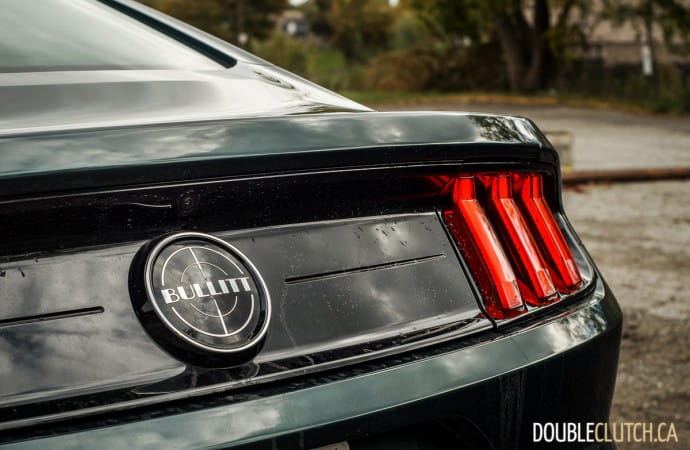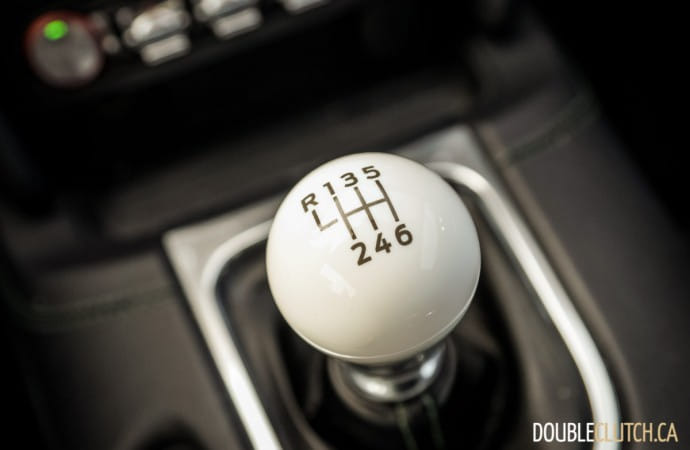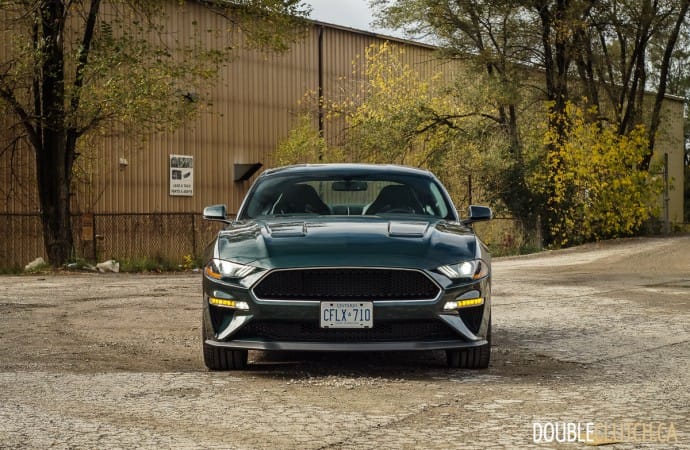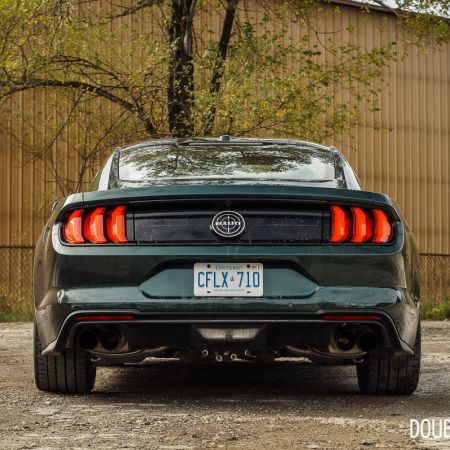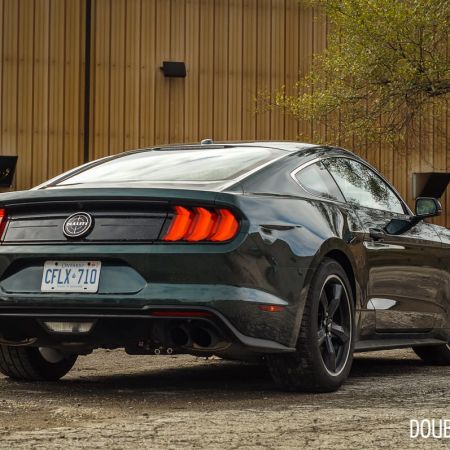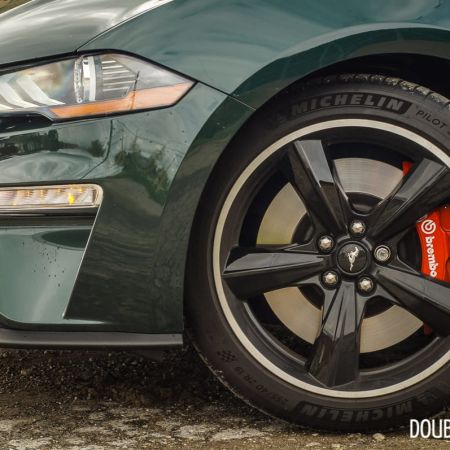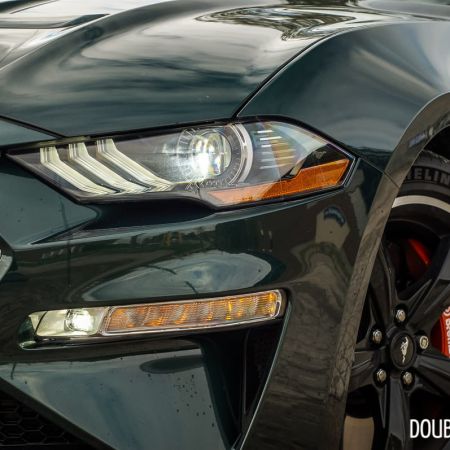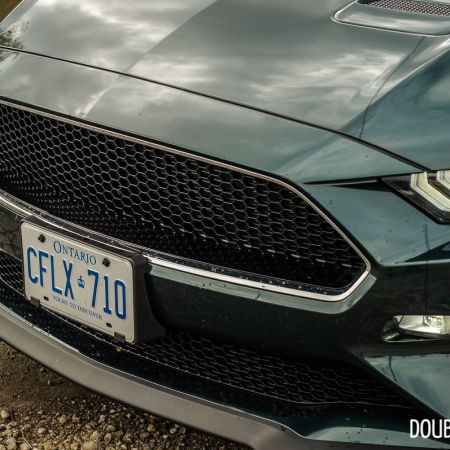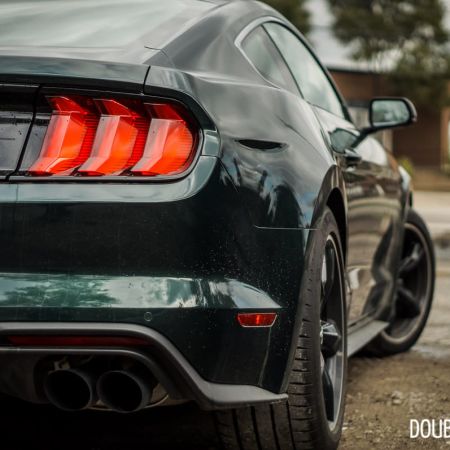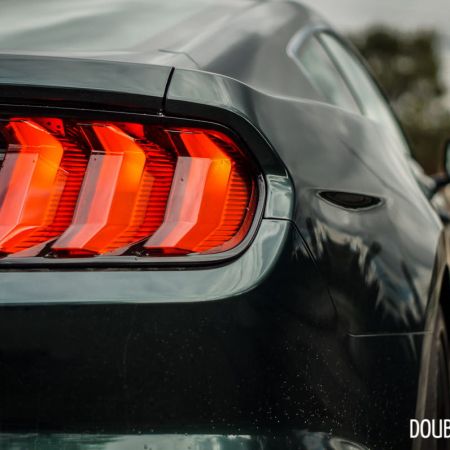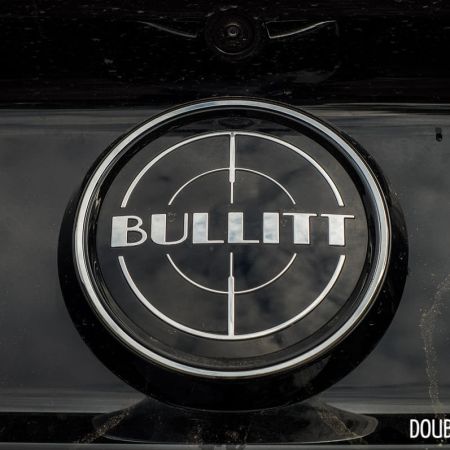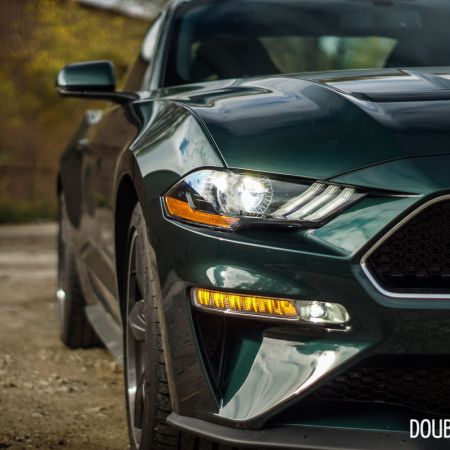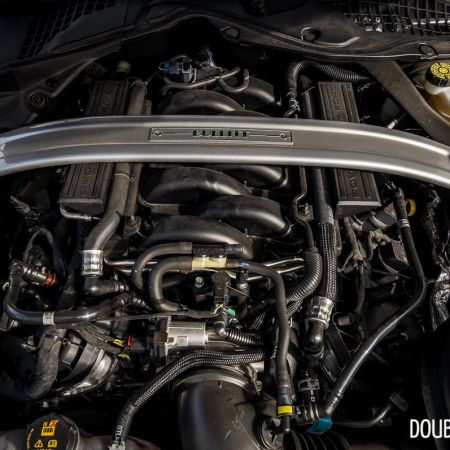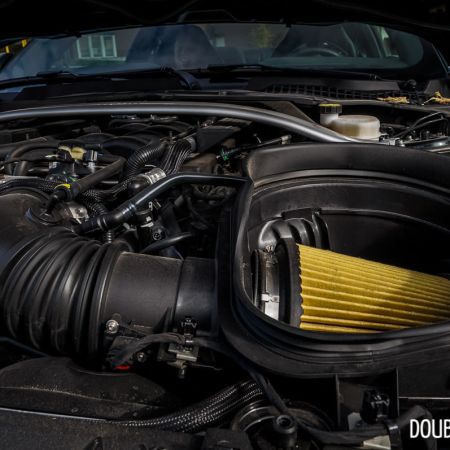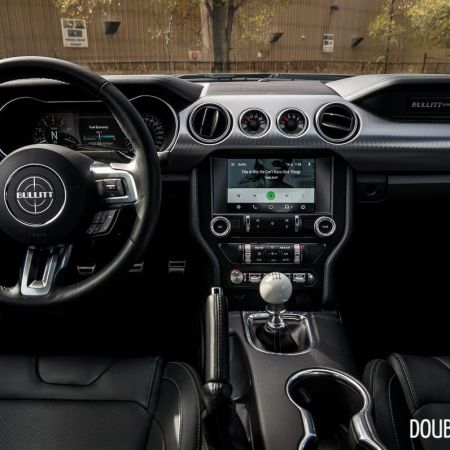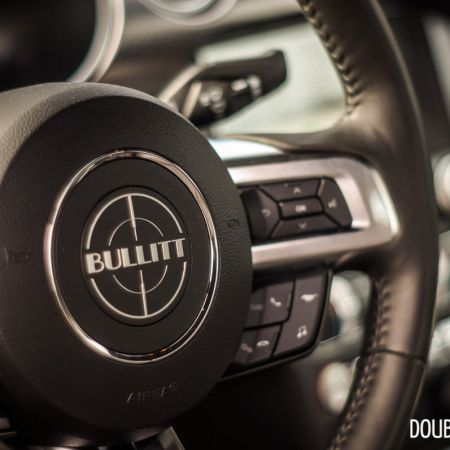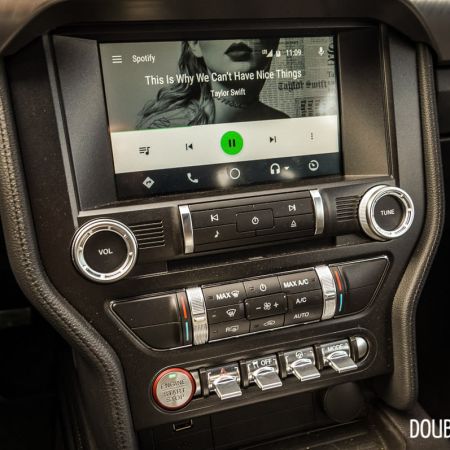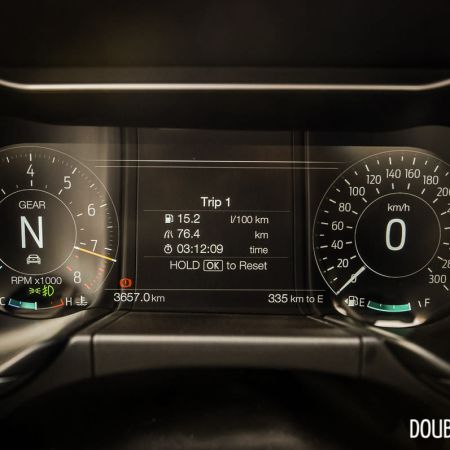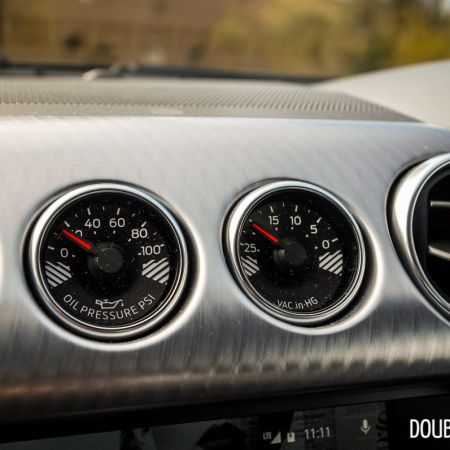Following the fame of the 1968 film Bullitt, Ford Motor Company’s Mustang nameplate became solidified in vehicular history as one of the most popular two-door coupes in existence. While one of the two original movie cars was thought to be long lost, it surfaced recently in Tennessee. Ford used it at this year’s North American International Auto Show to launch the 2019 Ford Mustang Bullitt, a homage to the old legend. With the keys to a Highland Green test car – the same colour name as the original – we sought to find out if the magic was still there.
Starting at a base price of $55,525, the 2019 Ford Mustang Bullitt builds on the GT Premium Coupe with more content and extras (no convertible is available). In addition to unique interior accents and exterior badging, there are black 19-inch five-spoke wheels, a 12-inch LCD gauge cluster, an active valve exhaust, a heated steering wheel, Bang & Olufsen 12-speaker audio, magnetic ride suspension, and a 3.73 ratio Torsen limited slip rear axle. There is only one individual option available, with the $1,800 Recaro front seating bringing the as-tested price to $57,325.
Only one transmission option is available on the Bullitt, and the six-speed manual now gets the ability to do automatic rev-matched downshifts for 2019. While the system can be defeated, it’s a useful and very functional feature that makes both street and performance driving a real cinch. Add to that a clutch with generous anti-stall measures when launching from a stop (using the throttle by wire to blip as needed) and rev matching on upshift (present on the Mustang for the last several years), the end result is a car that is easy enough for daily use, yet advanced enough to do great things on the track. The white cue-ball shifter feels amazing in the hand, and is a retro touch that is both function and form.
Unlike the regular GT Mustangs, the 5.0-litre Coyote V8 in the Bullitt gets some extra goodies in the form of direct fuel injection to go with the existing port injection. Having fuel injected right into the cylinder allows for a better control of the air-fuel mixture, and the net result is the ability to make more power. Additionally the intake manifold is lifted from the Shelby GT350, and as a result, peak output is up by 20 horsepower for a total of 480 at 7,000RPM, and torque remains unchanged with 420lb-ft at 4,600RPM. With a 7,400RPM redline, the five-oh V8 is no stranger to stratospheric heights, and it is great fun to wring it all out before grabbing the next gear.
With the Active Valve Performance Exhaust, the soundtrack is a definite high point, and at any point in the rev range, the Mustang lets out a big satisfying bark that never fails to impress. Because of its higher redline and state of tune, however, it does give up some low-end torque relative to its archrival Chevrolet. The Camaro SS gives more oomph to start with, but doesn’t rev as high and has power that tends to fall off at its lower 6,600RPM redline. On the streets and in daily driving, the Camaro may reign supreme, but when in an uncorked environment, the Ford is the one to have.
Fuel economy for the Mustang Bullitt comes in as expected for a large V8, with consumption rated at 16.1L/100KM in the city, and 9.9L/100KM on the highway. Observed economy after a week of testing netted 13.5L/100KM in mixed spirited driving. Tank capacity is 60 litres, and it is important to note that Ford’s rated power and economy figures were done with the recommended 93-octane premium fuel.
After testing the Bullitt around the streets of Toronto, there was also an opportunity to take one around the track at Monticello Motor Club in New York. In a 10/10ths scenario, the magnetic ride suspension and Michelin Pilot Sport 4S (255 front and 275 rear section width) get a chance to shine, and the V8 felt right at home stretching its legs out. The Mustang feels quite light on its feet when turning in and in mid-corner, with understeer building linearly when coming in too hot. By comparison, a Camaro is much more planted feeling with heavier inputs, resulting in more of a sense of stability. The Ford wins with a better powertrain, however, and will still make a great track-ready car.
Inside, the optional Recaro seats are manually adjusted and lose heated/cooled seating functionality – stick to the base seats if the climate controls and power adjustments are a must-have. Other than that, the sporty seats do very well at holding drivers and passengers in during spirited driving. There was a marked difference in lateral buttock movement on the track, as the US-spec test car at Monticello was relegated to the non-Recaros only. The sport seats are not so bad on longer trips either, but those with larger body proportions may start to ache a bit sooner.
Unlike 1968-era cars, today’s Mustang can be equipped with all of the latest technology, and the Bullitt is no exception. Ford’s Sync 3 infotainment system is a plain looking interface, but gets the job done well with simplified menus, as well as Android Auto and Apple CarPlay smartphone connectivity. These two setups allow for almost full phone functionality while reducing the likelihood of driver distraction, and can handle music streaming, navigation, and messaging using the phone’s built-in voice commands (such as Apple’s Siri).
As a throwback to the original movie, the 2019 Ford Mustang Bullitt is more than just a grille-and-wheel treatment with a white cue ball shifter. It’s a fantastic sports coupe that is extremely entertaining to drive in all aspects, and still remains easy to live with on a daily basis. For those looking for a little more performance or wanting to spend a lot of time on the track, the fastback Mustang GT Premium with the Level 2 Performance Pack would be the better idea. For Mustangs that spend more time on the street, the Bullitt offers almost all of the performance with a little extra uniqueness to sweeten the deal. The Highland Green paint job isn’t too shabby, either.

